Zhang Kongcheng, chairman of the Taiwan Lighting and Lighting Industry Association, attended the "Taiwan LED Supply and Refining Innovation Forum" hosted by the market organization DIGITIMES on 10/5. The LED industry in Taiwan is now the world's second largest output, but the second is due to South Korea. Actively developing LEDs, it is hard to say whether the LED industry in Taiwan can guarantee this after a few years. Taiwan was once the king of lighting and lighting more than 20 years ago, and is now undergoing a transition from traditional lighting to LED lighting. In the future, if Taiwan can jointly develop LED lighting standards with the mainland and strengthen interaction with international manufacturers, Taiwan's energy optoelectronic industry (including solar photovoltaic and LED lighting) is expected to create a trillion yuan output value in 2015.
Zhang Kongcheng stressed that due to the strong intention of neighboring countries, South Korea, whether the LED industry in Taiwan can maintain the existing market share after a few years is hard to say. It is often heard that the manufacturer is saying that there is no standard and no basis for what is produced. If this is to be solved, standardization is required.
Taiwan is now trying to work with the other side to develop standards. Such manufacturers have a basis and have common standards. If the products produced in Taiwan are only used in the Taiwan market, they may not be big enough to be digested. If the standards common to both sides of the strait can be formulated, it will be more beneficial to the future development of Taiwanese businessmen.
The booming development of Taiwan and lighting-related industries can be traced back to more than 20 years ago, starting with light bulbs. Zhang Kongcheng said that the upstream spare parts required for traditional light bulbs were not as complicated as they are now. Therefore, Taiwan is complete in the upper, middle and lower reaches of the traditional lighting industry. Taiwanese manufacturers can arrange them and be quite active. Initially OEM, ODM OEM, 20% for large enterprises, 80% for small and medium enterprises, and exported to Europe and the United States market.
Zhang Kongcheng further pointed out that in 1999 and about 11 years ago, Taiwan’s labor structure changed, labor acquisition became difficult, labor costs and factory land costs increased, investment environment changed greatly, and foreign low-cost competition made Taiwan’s lighting manufacturers Beginning to move to the development of mainland China, they have settled in the mainland of Guangdong, Shenzhen, Dongguan, Zhongshan and other places in China. The development of Taiwan's lighting industry has thus stagnated.
The timing continues to move forward to 2009. Taiwan's LED industry has made great progress. At the same time, high-tech has begun to enter the field of lighting. Optoelectronics manufacturers have stepped up their investment in lighting. The traditional lighting industry has begun to introduce optoelectronic technology, hoping to make breakthroughs.
Zhang Kongcheng believes that 2010 can be said to be the first year of photoelectric lighting, the international energy-saving and carbon-reduction trend is formed. In 2050, the world will reduce 48 billion tons of CO2 carbon dioxide. In 2005, global lighting produced up to 1900 million tons of carbon dioxide, equivalent to the carbon dioxide emissions of 70% of global light vehicles. In order to reduce the impact of lighting on the environment, incandescent lamps have been gradually banned, and light sources, lamps, and control systems are becoming more efficient.
At present, the current situation of the LED industry in Taiwan is mostly in the hands of foreign manufacturers at the equipment end (MOCVD machine) and the material end (including sapphire substrate, GaAs substrate, organic metal, phosphor, etc.). LED lead frame has a domestic (2486), Shunde (2351), Jinli (5383), Daxie supply, Taiwan's LED manufacturers' strengths, mainly in the process section, including LED epitaxial, die, package and so on.
According to the market research institute Strategy Unlimited and the Institute of Industrial Engineering, the output value of Taiwan's LED industry in 2006 was about 72.1 billion yuan. In 2009, it has reached 140 billion yuan. In 2011, it is estimated to reach 272 billion yuan. With the rapid development of LED lighting, it is expected that the output value of Taiwan's LED lighting industry will look at 540 billion yuan in 2015. Together with Sun Opto's 2015 annual output target of 450 billion yuan, Taiwan's energy and photovoltaic industry will also create a trillion yuan output value in 2015.
Overall, Zhang Kongcheng said that LED is only one of the light sources, and the improvement of luminous efficiency allows LED lighting to be fully used by consumers. The era has come slowly, street lights, billboards, general lighting. Because of its characteristics and advantages, it has small performance, high efficiency, long service life and so on. Through the patent exchange authorization of the LED industry (for example, Jingdian (2448) has just completed patent interaction with international manufacturers) will help Taiwan's LED industry export speed up. On the other hand, the future of Taiwan's LED industry lies in the close cooperation between the two sides. However, in the process of cross-strait cooperation, Taiwan still has to maintain a considerable degree of subjectivity before it will eventually be held back.

Standard PCB
A Printed Circuit Board (PCB) mechanically supports and electrically connects electronic components using conductive tracks, pads and other features etched from copper sheets laminated onto a non-conductive substrate. Components (e.g. capacitors, resistors or active devices) are generally soldered on the PCB. Advanced PCBs may contain components embedded in the substrate.
PCBs can be single sided (one copper layer), double sided (two copper layers) or multi-layer (outer and inner layers). Conductors on different layers are connected with vias. Multi-layer PCBs allow for much higher component density.
FR-4 glass epoxy is the primary insulating substrate. A basic building block of the PCB is an FR-4 panel with a thin layer of copper foil laminated to one or both sides. In multi-layer boards multiple layers of material are laminated together.
Printed Circuit Boards are used in all but the simplest electronic products. Alternatives to PCBs include wire wrap and point-to-point construction. PCBs require the additional design effort to lay out the circuit, but manufacturing and assembly can be automated. Manufacturing circuits with PCBs is cheaper and faster than with other wiring methods as components are mounted and wired with one single part.
Here at BentePCB, Standard PCB means manufacture parameter in General requirements, no special features.
Parameter Definition of Standard PCB as below:
|
Items |
Manufacturing Capabilities |
|
Number of Layers |
1-16 layers |
|
Material |
FR-4 |
|
Maximum PCB Size(Dimension) |
650x1200 mm |
|
Board Size Tolerance(Outline) |
±0.2mm/±0.5mm |
|
Board Thickness |
0.8-1.6mm |
|
Board Thickness Tolerance(t≥1.0mm) |
±10% |
|
Board Thickness Tolerance(t<1.0mm) |
±0.1mm |
|
Min Trace |
0.1mm/4mil |
|
Min Spacing |
|
|
Copper Thickness |
1oz(35μm) |
|
Drill Sizes (CNC) |
0.3-6.3mm |
|
Min Width of Annular Ring |
0.15mm(6mil) |
|
Finished Hole Diameter (CNC) |
0.3mm-6.2mm |
|
Finished Hole Size Tolerance(CNC) |
±0.08mm |
|
Solder Mask |
LPI |
|
Minimum Character Width(Legend) |
0.15mm |
|
Minimum Character Height (Legend) |
0.8mm |
|
Character Width to Height Ratio (Legend) |
1:05 |
|
Minimum Diameter of Plated Half Holes |
0.6mm |
|
Surface Finishing |
HASL with lead |
|
Solder Mask |
HASL lead free |
|
Immersion gold |
|
|
Green ,Red, Yellow, Blue, White ,Black |
|
|
Silkscreen |
White, Black, None |
|
Panelization |
V-scoring, |
|
|
Tab-routing, |
|
Tab-routing with Perforation (Stamp Holes) |
|
|
|
About Us:
BentePCB is a professional PCB manufacturing which is focus on double side, multilayer, HDI PCB , rigid PCB and Flexible PCB mass production. The company was established on 2011.
We have two factories together, The factory in Shenzhen is specialized in small and middle volume orders and the factory in Jiangxi is for big volume.
Why Us?
UL (E492586), ISO9001, ISO14001, TS16949, RoHS certified.
Turnover USD 10-50 million per year.
15,000 sqm area, 450 staff .
Mass Production from single to 16 layers.
Special Material:ROGERS, Arlon, Taconic.etc.
Client:Huawei, SAMSUNG, Malata, Midea,Texas Instruments.etc.
Certification(UL:E492586, TS16949, ISO14001, ISO9001,RoHS):

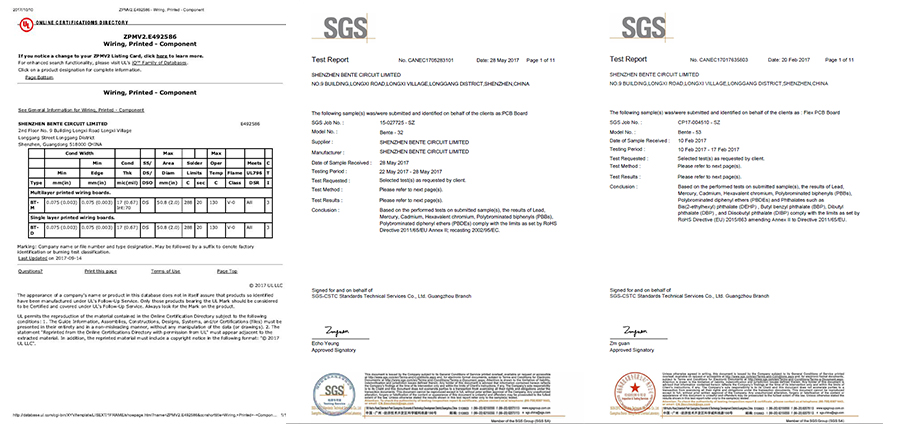
Factory Tour:
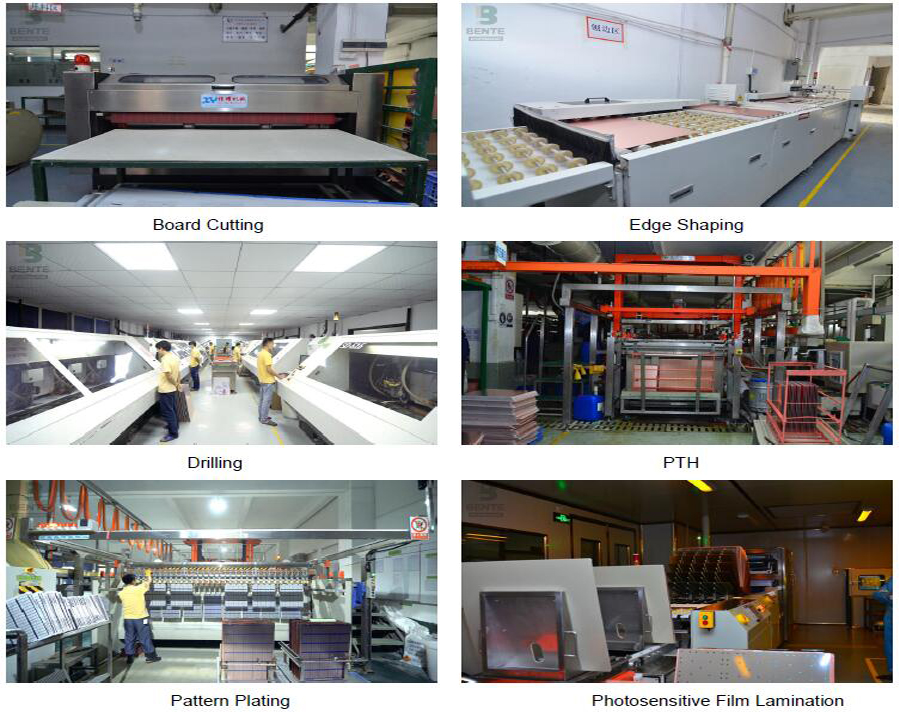
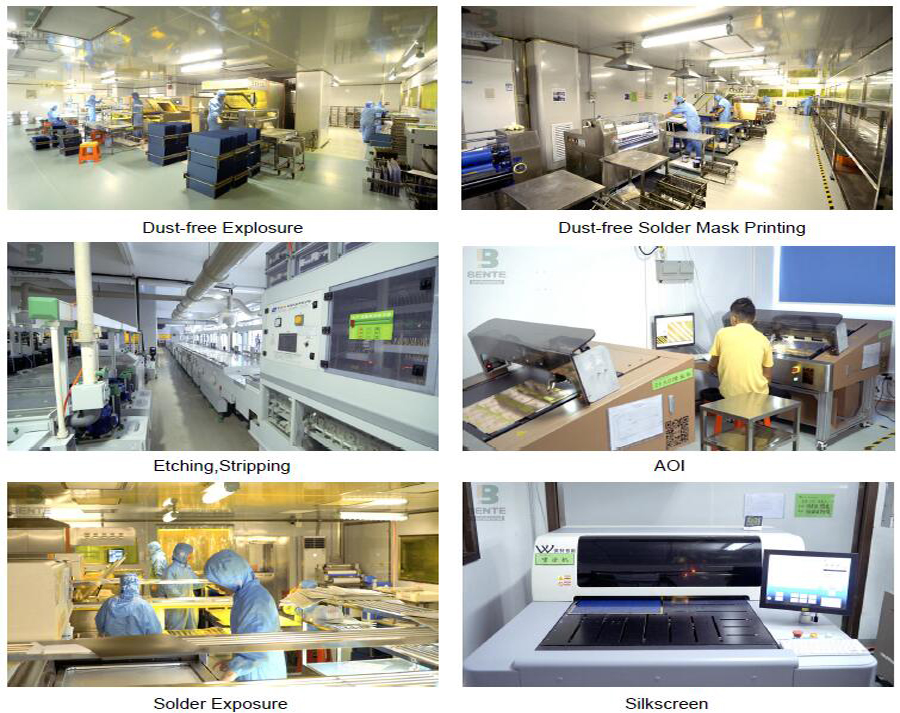
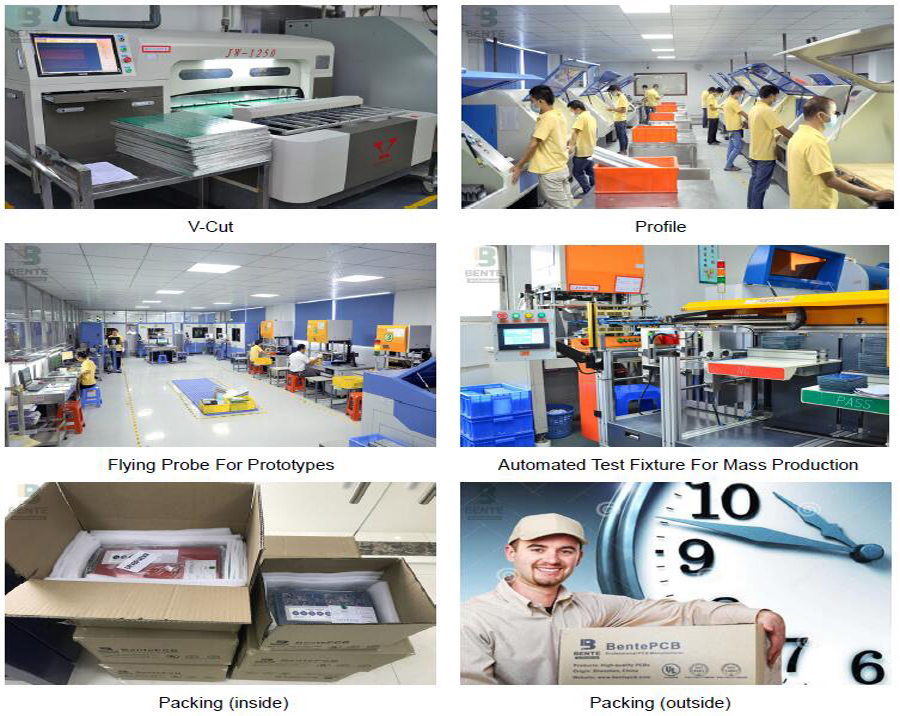
Exhibition:
We Took part in the famous exhibitions over the past years,and got highly appreciation from the top experts,as well as cooperated tightly with them.
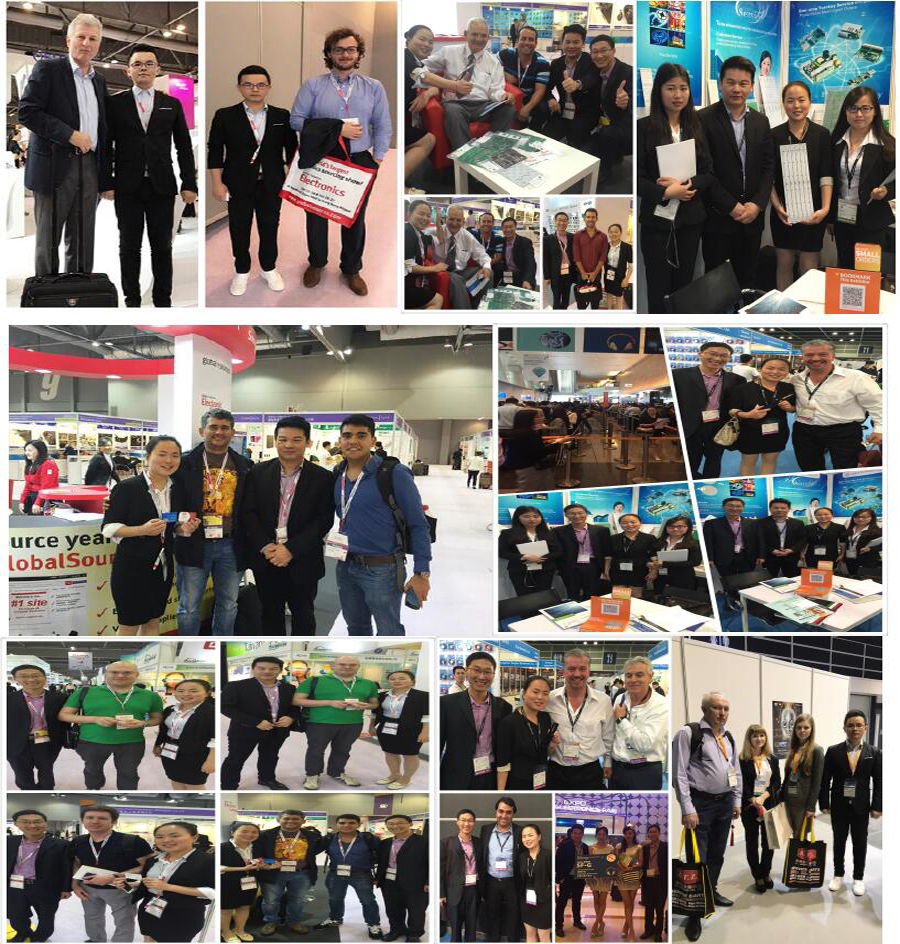
Delivery:
BentePCB offers flexible shipping methods for our customers, you may choose from one of the methods below.


We don`t just sell PCBs .We sell sleep.
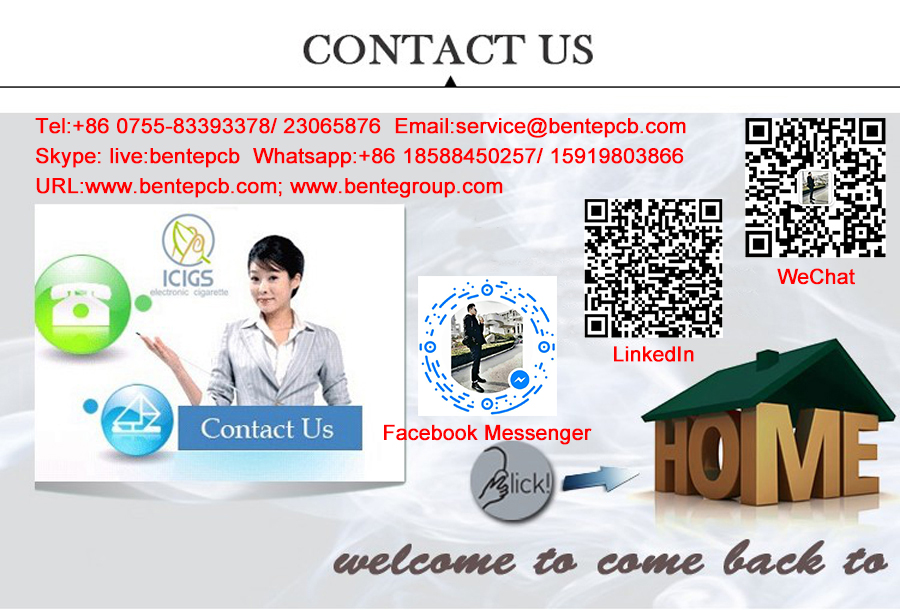
Standard PCB
Standard PCB, Printed Circuit Board, Circuit Board, PCB Circuit Board
Shenzhen Bente Circuit Limited , http://www.bentegroup.com